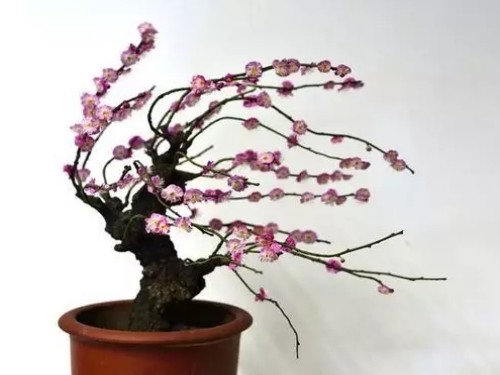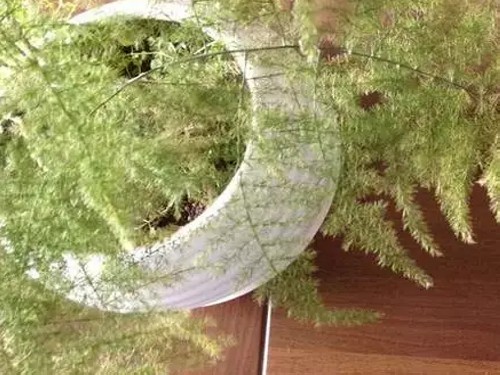Why does the rubber tree lose its leaves?-what if the rubber tree loses its leaves?
Rubber tree is an evergreen tree of Moraceae, which likes high temperature, humid and sunny environment, and can bear shade, but not cold, so it is very suitable for indoor beautification and decoration, which is often used to beautify the living room and study. It is also suitable to be arranged on both sides of the foyer of large buildings and in the center of the lobby. It is magnificent and magnificent. Its thick leaves can withdraw tropical amorous feelings and absorb cigarette exhaust. It is a very good indoor purification green plant.
Rubber tree is a famous foliage plant with bright green leaves and evergreen throughout the year. Many families will plant one or two pots to be placed in the living room or by the door, which is a very excellent decorative material. But if the rubber tree loses its leaves, these functions will be greatly reduced and affect its appearance. Sometimes we will encounter that the rubber tree at home has lost all its leaves, but we do not know how to save it. The rubber tree has lost its leaves and a large number of leaves have fallen abnormally, mainly because of soil and water, which is related to the usual conservation methods. To sum up the reasons, as long as the following four aspects are not much of a problem.
1. The temperature is suitable
One of the most common situations in which rubber trees lose their leaves is when the temperature is low, especially in winter, when the temperature is below 10 ℃, the rubber tree will begin to lose its leaves, so you need to move the rubber tree indoors or somewhere else with higher temperatures, but be careful to get sunlight.
Rubber trees like hot and humid environmental conditions, like places with plenty of sunshine, and the suitable temperature for growth is 20-25 ℃.
A pot of rubber tree at home can effectively absorb exhaust gas.
2. Plenty of sunshine
Rubber tree is a sunny plant, need to be placed in a sunny place, to maintain good light, the best winter can be sunny, if placed in a dark place, no sunlight can easily lead to the loss of rubber tree leaves.
This picture shows its strong adaptability.
3. Watering the right amount
Rubber trees must be often watered during their growth, especially in the hot summer season, because of their large evaporation, they need to be watered not only from their roots, but also from their leaves. However, the pot soil for planting rubber trees is too wet and easy to rot roots, and it must be watered when the pot soil is dry. Watering too frequently or not for a long time will cause the rubber tree to lose its leaves.
4. Insect pests need to be dealt with
Rubber trees sometimes have pest problems, leaves with red spiders, branches and leaves with shell insects will have fallen leaves, so the occurrence of leaf loss should be checked to see if it is a pest problem, and deal with it in time.
Relatively speaking, rubber trees are relatively easy to raise. But there are also many friends who complain about why it always loves to lose its leaves. It was supposed to be a good tree, starting from the bottom, with one leaf on the left and one on the right, and finally only a few leaves at the top.
The reasons for the loss of leaves of rubber trees are various. According to my planting experience over the past few years, I have summed up a few points for my friends' reference:
1, poor indoor ventilation, resulting in high carbon dioxide concentration, and then produce yellow leaves and fall.
Therefore, rubber trees should not be placed indoors for a long time, but should be put on the balcony or in the open air every once in a while to let them breathe fresh air.
If it is inconvenient to move, you should often open the window for air, keep the room ventilated and the air fresh.
2. Rubber trees are moisture-loving plants. If the indoor air is too dry, it will also make some leaves, especially the lower old leaves, turn yellow and fall off.
This is easy to solve, as long as remember to spray water on the branches and leaves several times a day (except on rainy days).
If you work harder and wipe the leaves with some beer with a piece of cloth, you can remove the dust, make the leaves bright green and increase the humidity, which is tantamount to applying fertilizer once and killing three birds with one stone.
3. The location of rubber trees is too shady.
You know, rubber tree is a tropical tree species, like plenty of sunshine, if you do not see the sun for a long time, the yellow leaves are inevitable.
Therefore, in addition to avoiding the fierce sunshine in the middle of summer, it should be allowed to bask in the sun in other seasons.
4. Too much or too little watering is also a factor causing yellow leaves to fall. If there is less water, the water in the basin soil is not enough to supply the transpiration of the leaves, and the leaves will naturally fall off.
On the contrary, too much water is irrigated, especially when the temperature is low, the water in the soil can not be removed, which will inevitably cause rotten roots, and the loss of leaves is inevitable.
Therefore, watering must look at the wetness of the basin soil, not blindly.
5. If the fertilizer is too thick, causing rotten roots, it is certain that the leaves will fall.
Therefore, the usual fertilization concentration must not exceed 0.3%, mainly phosphorus and potassium, would rather be lower concentration, conservative, thin fertilizer frequently applied!
6. Contrary to the above, little or no fertilizer is applied.
The rubber tree is malnourished, so of course the leaves will fall. This is easy to do. Buy some compound fertilizer and apply it every 10 days, and the situation will change immediately!
If your rubber tree has yellow leaves, as long as the control of the above points, a good check, find out the cause, the right medicine, it will be effective.
Let me teach you another trick. If your rubber tree has fallen leaves seriously, except for a few leaves at the top, the lower part is already bare.
Just cut off the top and stay as high as you want (the timing is early spring, of course, and it's best before the sap sprouts).
Prepare a little sulfur powder and a few paper towels before sawing. Immediately after sawing, apply the sulfur powder to the cross section of the branch, and then wrap it with a paper towel. The purpose of this is to prevent the loss of sap and affect survival.
After about a month, 5 new buds will grow below the branch section. You can choose to leave 3 full buds and erase the rest. When the new branch grows to 20 cm long, cut off the top again (also known as picking the heart), then the new branch will branch again, and finally grow into a "trigeminal nine tripod" tree, that will be beautiful!
After losing all the leaves of the rubber tree, we should not be nervous, let alone save them blindly. We must find out the reason for the loss of the leaves, and then save them purposefully. Most of the leaves of rubber trees are caused by soil and water problems, so we can use the method of elimination. For example: how long it has been raised, if it has been kept for a long time, and the leaves have been lost recently, then we can rule out whether the soil has been overwatered recently and whether the weather is wet, so that the water in the basin cannot volatilize. Through a similar method, first rule out whether there are problems in the three links of water, soil and fertilizer.
Time: 2019-06-01 Click:
- Prev

Culture method of family potted plum blossom
Plum blossom Rosaceae plum is a deciduous tree with beautiful branches, elegant colors and fragrance. In the winter when the flowers are withering, it is proud to fight snow and meet the cold in full bloom. It represents the indomitable noble quality of the Chinese nation, and its charm, beauty and fragrance are all excellent, ranking first among the top ten traditional famous flowers in our country.
- Next

What if the leaves of Phyllostachys pubescens / asparagus turn yellow
Asparagus is graceful, scattered, slender and straight, which can purify the air, cultivate sentiment, and is good for healthy fengshui. Many flower friends grow it in their homes. Recently, I have seen many people complain that the asparagus at home is getting more and more yellow, so today the editor will introduce to you the reason why the leaves of asparagus turn yellow and prescribe the right medicine to the case.
Related
- Fuxing push coffee new agricultural production and marketing class: lack of small-scale processing plants
- Jujube rice field leisure farm deep ploughing Yilan for five years to create a space for organic food and play
- Nongyu Farm-A trial of organic papaya for brave women with advanced technology
- Four points for attention in the prevention and control of diseases and insect pests of edible fungi
- How to add nutrient solution to Edible Fungi
- Is there any good way to control edible fungus mites?
- Open Inoculation Technology of Edible Fungi
- Is there any clever way to use fertilizer for edible fungus in winter?
- What agents are used to kill the pathogens of edible fungi in the mushroom shed?
- Rapid drying of Edible Fungi

